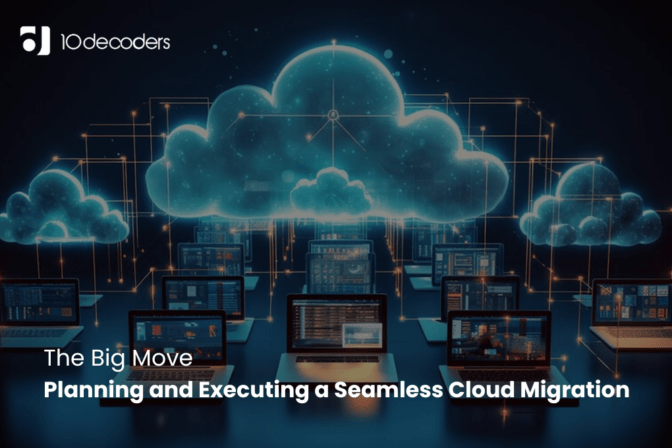The Big Move: Planning and Executing a Seamless Cloud Migration
As businesses increasingly recognize the benefits of cloud computing, many are embarking on cloud migration projects to modernize their IT infrastructure, improve scalability, and drive innovation. However, successful cloud migration requires careful planning, execution, and management to avoid pitfalls and ensure a seamless transition. In this blog, we’ll provide a comprehensive step-by-step guide to help organizations plan and execute a successful cloud migration, from assessing readiness and selecting the right cloud platform to optimizing performance and ensuring security.
Assess Current Infrastructure and Workloads
The first step in a successful cloud migration project is to conduct a thorough assessment of your organization’s current infrastructure, applications, and workloads. Identify which applications are suitable for migration to the cloud based on factors such as performance requirements, data sensitivity, and regulatory compliance. Assess the dependencies between applications and determine the order of migration to minimize disruptions. Additionally, evaluate your organization’s readiness for cloud adoption, including factors such as internal expertise, budget constraints, and cultural considerations.
Define Migration Strategy and Goals
Once you have assessed your current infrastructure and workloads, define a clear migration strategy and set specific goals for the project. Determine whether you will adopt a lift-and-shift approach, refactor applications for cloud-native architectures, or re-architect existing solutions for optimal cloud performance. Establish key performance indicators (KPIs) to measure the success of the migration, such as cost savings, performance improvements, and time-to-market for new features. Align your migration strategy with your organization’s broader business objectives and ensure buy-in from stakeholders across departments.
Choose the Right Cloud Platform
Selecting the right cloud platform is critical to the success of your migration project. Consider factors such as the scalability, reliability, security, and cost-effectiveness of different cloud providers, such as Amazon Web Services (AWS), Microsoft Azure, and Google Cloud Platform (GCP). Evaluate each provider’s service offerings, geographic availability, and compliance certifications to ensure they meet your organization’s specific requirements. Additionally, consider whether a public, private, or hybrid cloud deployment model is most suitable for your organization’s needs and regulatory constraints.
Plan for Data Migration and Integration
Data migration is often one of the most complex and time-consuming aspects of a cloud migration project. Develop a detailed plan for migrating your data to the cloud, including identifying data sources, mapping data flows, and ensuring data integrity and security throughout the migration process. Consider using tools and services provided by cloud providers to streamline data migration tasks and minimize downtime. Additionally, plan for integration with existing systems and applications to ensure seamless connectivity and interoperability in the cloud environment.
Execute Migration in Phases
To minimize disruption to business operations, execute your cloud migration in phases, starting with low-risk applications and gradually migrating more critical workloads over time. Develop a detailed migration plan for each phase, including timelines, resource allocation, and rollback procedures in case of issues or failures. Test each migration thoroughly in a staging environment before deploying to production to identify and address any potential issues or compatibility issues. Communicate with stakeholders regularly throughout the migration process to manage expectations and address concerns proactively.
Optimize Performance and Cost
Once your workloads are migrated to the cloud, focus on optimizing performance and cost to maximize the benefits of cloud computing. Monitor key performance metrics such as latency, throughput, and resource utilization to identify areas for improvement and optimization. Use cloud-native services such as auto-scaling, serverless computing, and containerization to optimize resource usage and reduce costs. Implement cost management practices such as rightsizing instances, leveraging reserved instances, and optimizing storage usage to minimize cloud expenses without sacrificing performance or reliability.
Ensure Security and Compliance
Security and compliance are paramount considerations in cloud migration projects. Implement robust security measures such as encryption, access controls, and network segmentation to protect sensitive data and applications in the cloud. Follow best practices for identity and access management (IAM), data governance, and threat detection and response to mitigate security risks and ensure regulatory compliance. Regularly audit and monitor your cloud environment for security vulnerabilities and compliance gaps, and take corrective action as needed to maintain a secure and compliant infrastructure.
Conclusion
Successfully planning and executing a cloud migration project requires careful consideration of factors such as infrastructure assessment, migration strategy, cloud platform selection, data migration, phased execution, performance optimization, security, and compliance. By following the step-by-step guide outlined in this blog and leveraging best practices and tools provided by cloud providers, organizations can minimize risks, streamline the migration process, and realize the full benefits of cloud computing, including improved scalability, agility, and cost-effectiveness. With proper planning and execution, a seamless cloud migration can lay the foundation for future innovation and growth in the digital age.



